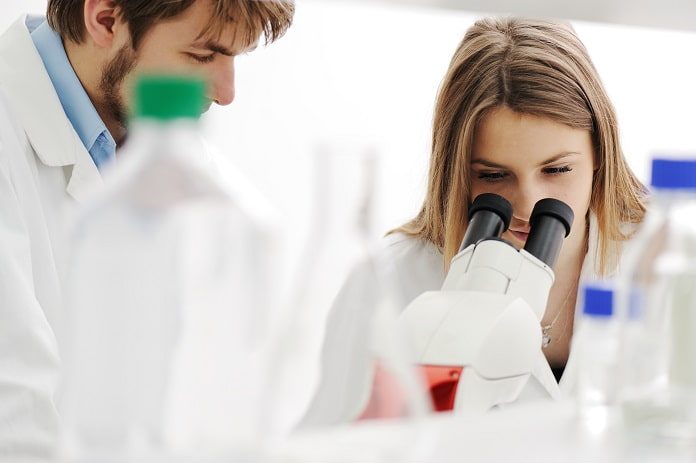New method of bone tissue engineering may open doors for research and discovery in bone disease and medicine
Bone tissue is a complex composition of metabolically active cells within a heavily calcified structure of minerals, collagen (a protein), non-collagenous proteins and crystallites. In the past, attempts at replicating human bone tissue have not been successful at accurately reproducing the mineralized structure, cell populations, and functioning of bone tissue. However, scientists in the United States have recently achieved the most accurate bone model to date using bone tissue engineering. Their methods are described in Nature Communications.
The engineered material is a three-dimensional structure containing bone cells, nerve cells, and endothelial cells, which form into functional blood vessels. The scientists started with a mixture of stem cells and collagen. The collagen proteins then form a gel structure containing the stem cells embedded within it. Next, the scientists poured dissolved calcium and phosphate (essential bone minerals) and a protein called osteopontin, to prevent crystallization from occurring too quickly and to minimize the minerals’ toxicity to the cells, in their mixture.
As the mixture diffuses through the pathways in the collagen gel structure, the dissolved calcium and phosphate minerals form layers of crystals. The stem cells then mature into functioning bone cells. After a few days, the growing cells are able to develop connections with and communicate to other nearby cells. This bone tissue engineering method creates the proper environment that can signal stem cells to mature into bone cells. Nerve cells were then added to form connected networks and endothelial cells were added to form networks of open vessels.
Their method of bone tissue engineering involves the same biophysical process that human bone formation does. As a result, the scientists were able to reproduce the human bone’s architecture and functioning. Their engineered bone material was tested as a replacement for injured bone in mice models with positive results and they’re now looking at engineering a version with marrow cells to study blood cancers, such as leukemia.
To date, this method of bone tissue engineering has been the most successful at accurately replicating natural bone tissue. Bone tissue engineering will have implications for future exploration and understanding of disease processes and injuries affecting the bone. Further, this bone model can be used to facilitate new drug discoveries and regenerative medicine.
Written by Maggie Leung, PharmD.
References:
Thrivikraman, G., Athirasala, A., Gordon, R., Zhang, L., Bergan, R., Keene, D. R., . . . Bertassoni, L. E. (2019). Rapid fabrication of vascularized and innervated cell-laden bone models with biomimetic intrafibrillar collagen mineralization. Nature Communications,10(1). doi:10.1038/s41467-019-11455-8
‘Bone in a dish’ opens new window on cancer initiation, metastasis, bone healing. (2019, August 6). Retrieved from https://www.eurekalert.org/pub_releases/2019-08/ohs-ia080219.php



